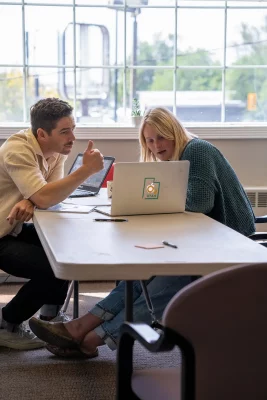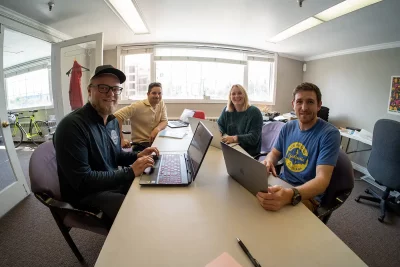
O2 Utah: Improving Air Quality To Improve Quality of Life
Activism, Outreach and Education

O2 Utah, a local environmental nonprofit working to better the air quality of Utah, collaborated with Senator Kirk Cullimore and Representative Andrew Stoddard to pass and sign House Bill 220 on March 14 to reduce the unfettered dumping of toxic halogens into our airshed. O2’s mission is to use elections and policy to their advantage, garnering support from elected officials to make environmental changes to the law and standard practice. “I thought we needed an organization that followed a three-step plan,” says David Garbett, the director and founder of O2 Utah. “Step one, getting involved in elections; two, building relationships with policymakers; and three, giving them policy.”
Although a nonprofit, O2 Utah is also a 501C4, an organization that can endorse candidates, make donations and campaign. With his legal background, Garbett and his team of five can write legal proposals with weight, translating scientific concepts into legislative language and programs. “It’s one thing to have science on paper, but that is not going to make policy itself,” Garbett says.
“The best research says that we’re dying here in Utah two–five years earlier because of our bad air.”
O2 Utah campaigned to support Cullimore and Stoddard during their reelection in 2022, communicating to voters that these two candidates would work toward solving air quality issues in Utah. A messaging experiment they ran during that time found that swing voters are 16% more likely to support a pro–air quality candidate. “It’s a part of our theory that we need to give legislatures a roadmap to get clean air, and we call that road map Prosperity 2030,” Garbett says. This “northstar” aims to cut emissions by 50% along the Wasatch Front by 2030. Those emissions are to be reduced from the three main local polluters they’ve identified: transportation, residential and commercial buildings and industrial sources.
HB220 is one facet of Prosperity 2030. The bill focuses solely on industrial byproducts like bromine, requiring the Utah Division of Air Quality (DAQ) to make a recommendation to the legislature on a state halogen emissions limit by the end of 2024. In the meantime, DAQ must set a tech-based standard for bromine and other halogen emissions, requiring companies to use certain tools to limit emissions. DAQ must also identify and quantify all industrial sources of halogens, and halogen emissions must be controlled no later than 2026. This bill, the product of much revision and compromise, passed through the House and Senate floors before Gov. Cox signed it into law on March 14.

US Magnesium LLC is the main producer of magnesium in the country, located here because magnesium is extracted from salt deposits, which is also the only place bromine is found naturally. “It’s either the ocean or the Great Salt Lake,” Garbett says. When processing these salts to extract magnesium, bromine is a byproduct. “Which they basically have been dumping into the airshed, although findings show that it’s making our inversions anywhere from 10 to 25% worse,” says Garbett.
“It’s one thing to have science on paper, but that is not going to make policy itself.”
O2 Utah is adamant about improving the quality of air we breathe because of how negatively poor air impacts our lives. “The best research says that we’re dying here in Utah two–five years earlier because of our bad air,” Garbett says, “and [that fact] has so many different health impacts and is a big drag on our economy.”
The organization will continue following the path toward their Prosperity 2030 goal. “The most important thing the public does is set priorities. The public doesn’t have to know the science,” Garbett says. “What they do know is that they hate our dirty air. That’s what should be conveyed to legislatures to help them understand this needs to be a higher priority.”
Connect with O2 Utah on Instagram @o2Utah and visit their website at o2utah.org where you can learn more about the organization’s efforts, see their 2023 Legislative Report Card and get involved.
Read more on environmental activism in Salt Lake City:
Public Art Piece In Search of Blue Sky Finds Common Ground in Air Quality Fight
Sweet Streets: Making Movement Safer for Salt Lake City